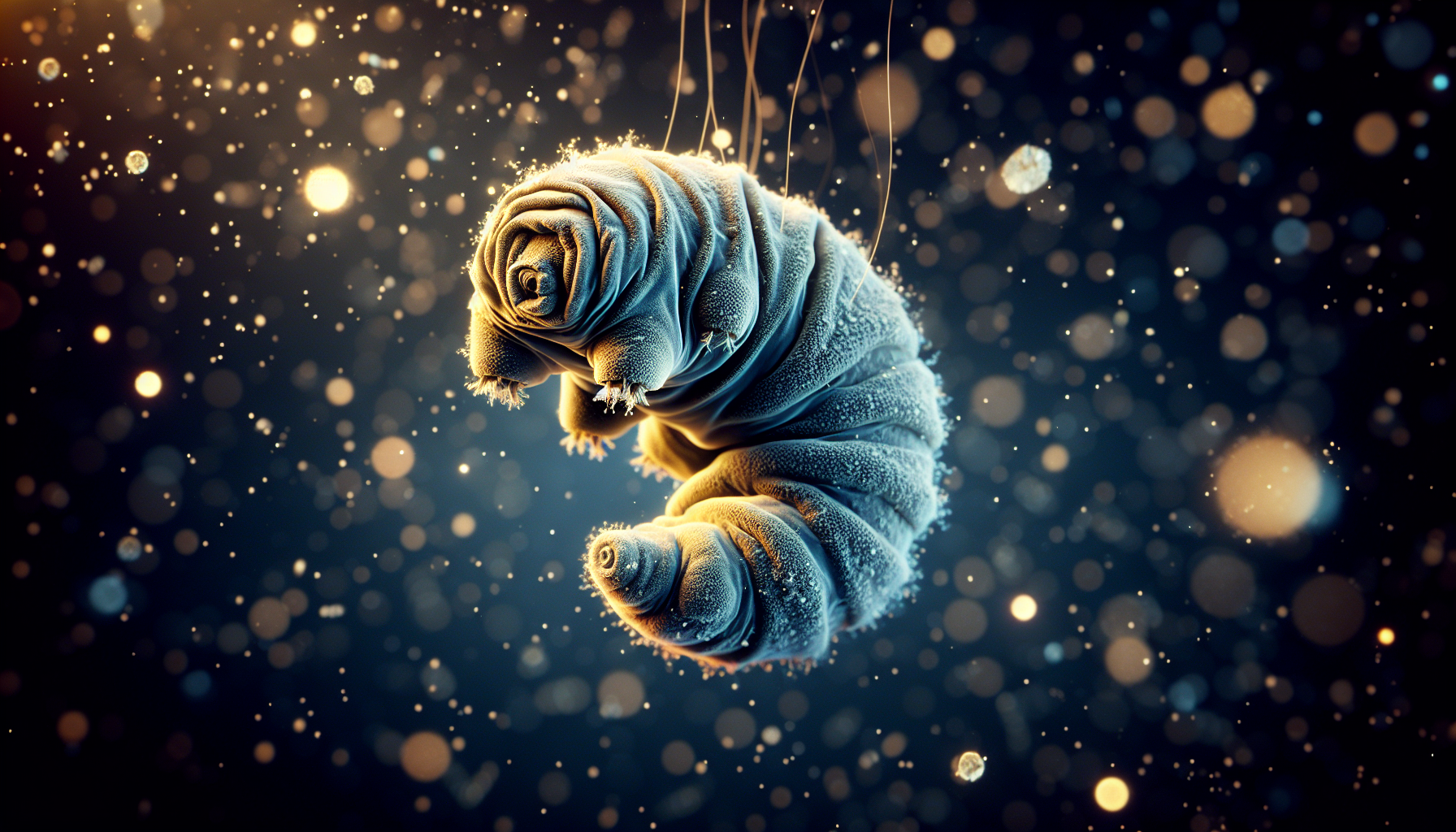
Another remarkable aspect of their resilience lies in the makeup of their cellular structures. Unlike most organisms, tardigrades don’t rely on water to maintain the stability of their cells during dry spells. Instead, they use unique proteins, such as tardigrade-specific intrinsically disordered proteins (TDPs), which essentially act like molecular scaffolding inside their cells. TDPs replace water in critical areas, preventing collapse or irreversible damage during severe dehydration. When rehydrated, these proteins allow the cells to seamlessly spring back to life, a process that even in the microscopic world borders on miraculous.
Then there’s their DNA, which holds clues to their breathtaking survival. Tardigrades have developed an arsenal of strategies to protect their genetic material from harm. For instance, they produce a protein unique to their species called Dsup, short for “damage suppressor.” This protein wraps around their DNA like a shield, safeguarding it from radiation and other forms of damage that would obliterate less fortunate organisms. Combined, these biological tools make tardigrades pioneers of adaptation, thriving where most life would only perish.
Survival strategies in extreme environments
Tardigrades are the ultimate survivalists, thriving in places that seem more like hostile alien worlds than hospitable environments for life. Take the freezing vacuum of outer space, for example: these strange creatures were exposed to it during experiments conducted by the European Space Agency, only to return unscathed. They’ve also endured blistering temperatures of up to 300°F (150°C) and the crushing pressures found in ocean trenches, which would obliterate most other organisms.
One of their key strategies in such extremes lies in their ability to embrace a state of suspended animation. When threats arise—whether it’s intense heat, freezing cold, or complete desiccation—tardigrades initiate cryptobiosis. In this state, they shrink into the compact, curled-up “tun” form, halting all biological processes. It’s as if their clocks stop ticking until better conditions return. In this low-energy state, they conserve resources while their protective adaptations spring into action. Some tardigrades have been revived after decades in this dormant state, rehydrating and resuming normal activity as though time had simply paused for them.
Perhaps the most jaw-dropping chapter of their survival manual is their defense against radiation. While other organisms view radiation as an insurmountable threat—destroying cells, damaging DNA, and disrupting all basic functions—tardigrades take it in stride. Thanks to proteins like Dsup, their DNA remains astonishingly intact even when faced with doses of radiation that would overwhelm far larger and more complex creatures. This trait has even inspired research into how Dsup might someday help protect human DNA in high-radiation environments like space travel.
Tardigrades also reimagine how organisms interact with their environment. In extreme dryness, they replace cellular water with a sugar called trehalose, which stabilizes membranes and proteins. Added to this, their outer cuticle serves as a physical barrier, shielding them from harmful external forces. This suite of tools allows them to conquer extremes that push the definition of what life can endure.
Such resilience prompts the question: are tardigrades survivalists by sheer adaptability, or are they nature’s ultimate escape artists? Either way, their strategies offer a fascinating glimpse into the boundless creative powers of evolution.

